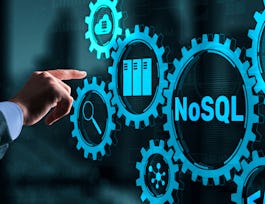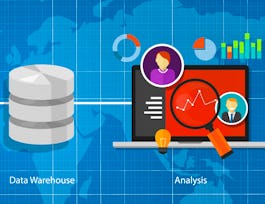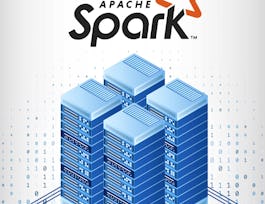Kickstart your Data Warehousing and Business Intelligence (BI) Analytics journey with this self-paced course. You will learn how to design, deploy, load, manage, and query data warehouses and data marts. You will also work with BI tools to analyze data in these repositories.


Getting Started with Data Warehousing and BI Analytics
This course is part of multiple programs.
Taught in English
Some content may not be translated


Instructors: Ramesh Sannareddy
22,264 already enrolled
Included with 
Course
(151 reviews)
87%
Recommended experience
What you'll learn
Explore the architecture, features, and benefits of data warehouses, data marts, and data lakes and identify popular data warehouse system vendors.
Design and populate a data warehouse, and model and query data using CUBE, ROLLUP, and materialized views.
Identify popular data analytics and business intelligence tools and vendors and create data visualizations using IBM Cognos Analytics.
Design and load data into a data warehouse, write aggregation queries, create materialized query tables, and create an analytics dashboard.
Skills you'll gain
Details to know

Add to your LinkedIn profile
7 quizzes
Course
(151 reviews)
87%
Recommended experience
See how employees at top companies are mastering in-demand skills

Build your subject-matter expertise
- Learn new concepts from industry experts
- Gain a foundational understanding of a subject or tool
- Develop job-relevant skills with hands-on projects
- Earn a shareable career certificate


Earn a career certificate
Add this credential to your LinkedIn profile, resume, or CV
Share it on social media and in your performance review

There are 4 modules in this course
Welcome to your first module! This module provides a gentle but thorough introduction to data warehouse systems, data lakes, and data marts. When you complete this module, you’ll be able to identify and compare data warehouse systems, data mart, and data lake architecture, and understand how organizations can benefit from each of these three data storage entities. Optionally, you’ll explore the workings of IBM Db2 data warehouse system architecture, view use cases, and understand the key capabilities and integrations available with IBM Db2 Warehouse. Then, you’ll learn about three types of data warehouse systems and popular data warehouse system vendors. You will be ready to help your organization assess new data warehouse system offerings when you know the five essential, critical criteria, including total cost of ownership, to evaluate before changing to a new data warehouse system.
What's included
7 videos2 readings2 quizzes1 app item2 plugins
In this knowledge-packed module, you’ll explore general and reference enterprise data warehousing architecture. You’ll discover how data cubes relate to star schemas. Then you’ll learn how to slice, dice, drill up or down, roll up, and pivot relative to data cubes. Next, you will examine the capabilities of materialized views, their benefits, and how to apply them. You’ll learn how data organization using facts and dimensions and their related tables organizes information. Then, you will explore how to use normalization to create a snowflake schema as an extension of the star schema. You will learn about populating a data warehouse, incremental data updates, verifying data, querying data, interpreting an entity-relationship diagram for a star schema, creating a materialized view, and applying the CUBE and ROLLUP options. You’ll also discover how organizations can benefit by implementing staging.
What's included
8 videos3 readings2 quizzes6 app items1 plugin
In this module, you’ll fast-track your data analytics learning and gain hands-on data analytics experience using IBM Cognos Analytics. After registering with Cognos Analytics, you’ll explore the platform’s capabilities by creating visualizations, building a simple dashboard, and trying out its advanced features.
What's included
6 videos1 reading2 quizzes5 plugins
In this module, you’ll complete your final course project, which brings together concepts and practices you previously learned in the first three modules. In this final project, you will design and load data into a data warehouse using facts and dimension tables. Then you’ll write aggregation queries using CUBE and ROLLUP functions and create materialized query tables, known as a materialized view. You will complete your project by using IBM Cognos to create an analytics dashboard.
What's included
3 readings1 quiz1 peer review2 app items1 plugin
Offered by
Recommended if you're interested in Data Management
Why people choose Coursera for their career




Learner reviews
Showing 3 of 151
151 reviews
- 5 stars
71.61%
- 4 stars
12.90%
- 3 stars
5.16%
- 2 stars
2.58%
- 1 star
7.74%
New to Data Management? Start here.

Open new doors with Coursera Plus
Unlimited access to 7,000+ world-class courses, hands-on projects, and job-ready certificate programs - all included in your subscription
Advance your career with an online degree
Earn a degree from world-class universities - 100% online
Join over 3,400 global companies that choose Coursera for Business
Upskill your employees to excel in the digital economy
Frequently asked questions
Access to lectures and assignments depends on your type of enrollment. If you take a course in audit mode, you will be able to see most course materials for free. To access graded assignments and to earn a Certificate, you will need to purchase the Certificate experience, during or after your audit. If you don't see the audit option:
The course may not offer an audit option. You can try a Free Trial instead, or apply for Financial Aid.
The course may offer 'Full Course, No Certificate' instead. This option lets you see all course materials, submit required assessments, and get a final grade. This also means that you will not be able to purchase a Certificate experience.
When you enroll in the course, you get access to all of the courses in the Certificate, and you earn a certificate when you complete the work. Your electronic Certificate will be added to your Accomplishments page - from there, you can print your Certificate or add it to your LinkedIn profile. If you only want to read and view the course content, you can audit the course for free.
If you subscribed, you get a 7-day free trial during which you can cancel at no penalty. After that, we don’t give refunds, but you can cancel your subscription at any time. See our full refund policy.





